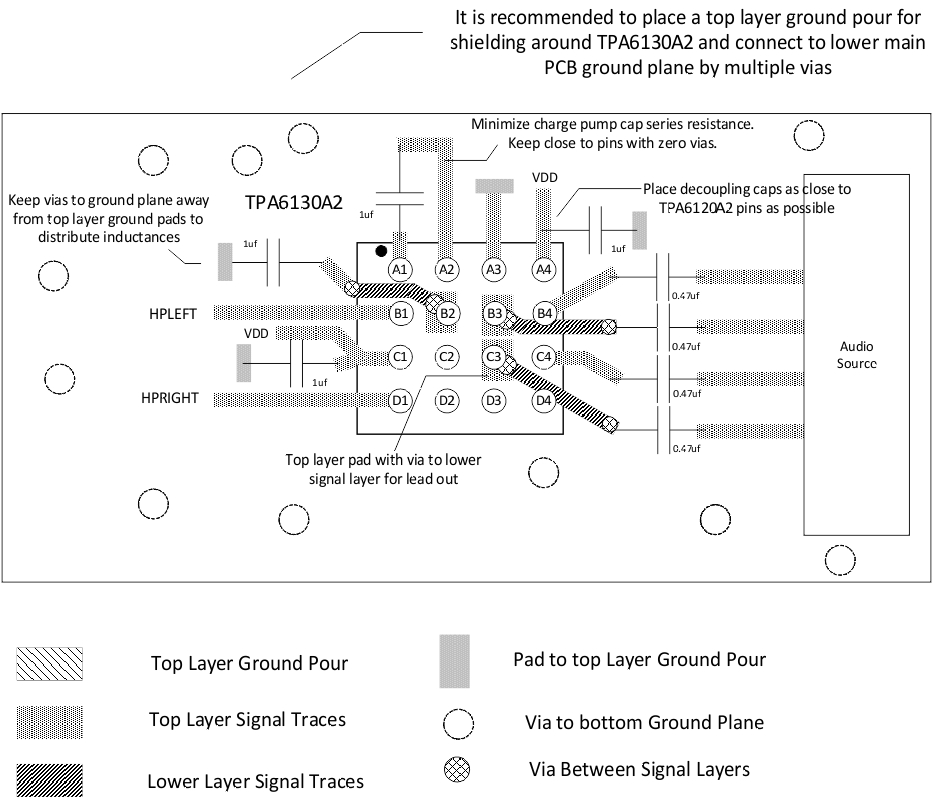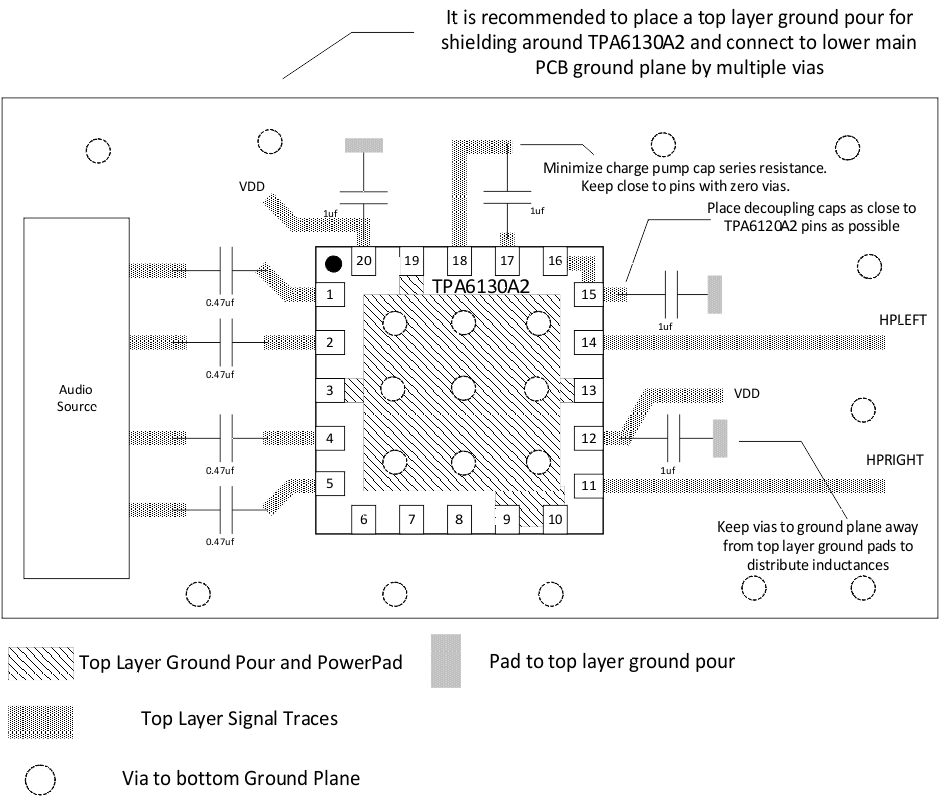SLOS488F November 2006 – March 2015 TPA6130A2
PRODUCTION DATA.
- 1 Features
- 2 Applications
- 3 Description
- 4 Simplified Schematic
- 5 Revision History
- 6 Pin Configuration and Functions
- 7 Specifications
- 8 Detailed Description
- 9 Applications and Implementation
- 10Power Supply Recommendations
- 11Layout
- 12Device and Documentation Support
- 13Mechanical, Packaging, and Orderable Information
封装选项
机械数据 (封装 | 引脚)
散热焊盘机械数据 (封装 | 引脚)
- RTJ|20
订购信息
11 Layout
11.1 Layout Guidelines
Exposed Pad On TPA6130A2RTJ Package Option:
- Solder the exposed metal pad on the TPA6130A2RTJ QFN package to the a pad on the PCB. The pad on the PCB may be grounded or may be allowed to float (not be connected to ground or power).
- If the pad is grounded, it must be connected to the same ground as the GND pins (3, 9, 10, 13, and 19).
- Soldering the thermal pad improves mechanical reliability, improves grounding of the device, and enhances thermal conductivity of the package.
GND Connections:
- The GND pin for charge pump should be decoupled to the charge pump VDD pin, and the GND pin adjacent to the Analog VDD pin should be separately decoupled to each other.
11.2 Layout Example
 Figure 48. YZH (DSBGA) Package
Figure 48. YZH (DSBGA) Package
 Figure 49. RTJ (WQFN) Package
Figure 49. RTJ (WQFN) Package